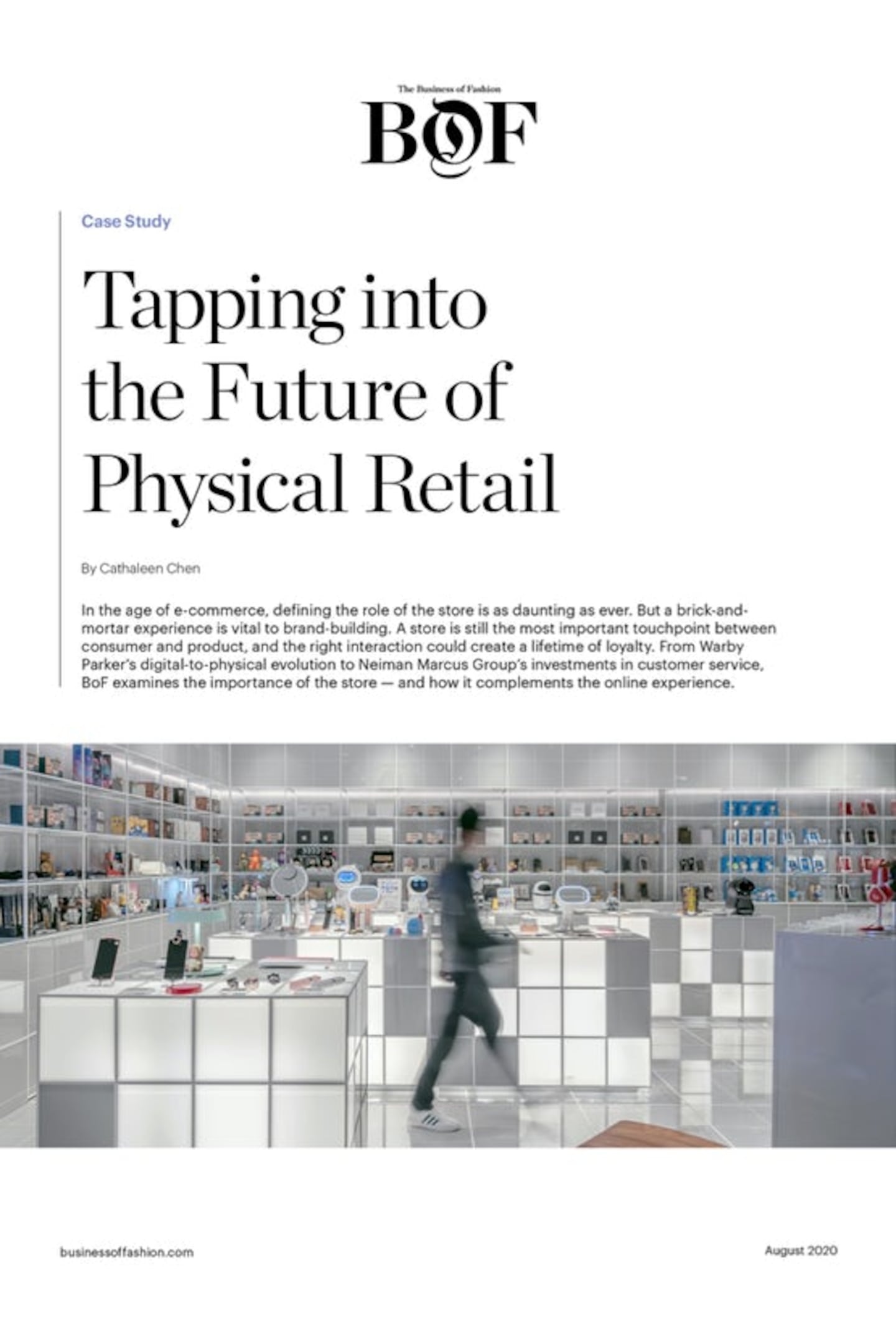
The Business of Fashion
Agenda-setting intelligence, analysis and advice for the global fashion community.

Agenda-setting intelligence, analysis and advice for the global fashion community.

As the acceleration of e-commerce continues, the role of the store is being profoundly challenged. Why drive to the mall when department stores and luxury brands alike make their products accessible at one’s fingertips?
Retailers no longer need prodigious fleets of stores in order to reach their shoppers. The coronavirus pandemic made this clearer than ever: brands and vendors from Gap to Zara are reducing their physical footprints. But the store isn’t dead; it’s just evolving. Today, stores must be treated as marketing opportunities as well as marketplaces. They exist as spaces where shoppers can interact with products and engage with brands without necessarily completing a transaction. The store is a running ad, and if a consumer walks out without buying something, they will at least be more likely to return, or to seek out products online for purchase later. Digital goes hand-in-hand with brick-and-mortar commerce. Navigating this evolution will be critical for any brand or retailer hoping to grow in 2020 and beyond.
However, embracing the new model of stores doesn’t mean rejecting the fundamentals of brick-and-mortar retail. Convenience, ease and good customer service are more critical than ever. What does that look like in a multichannel shopping ecosystem? How can brands and retailers balance these basics with the new digital demands of consumers?
The purpose of this case study is to guide companies through a brick-and-mortar strategy to maximise sales — both in stores and online — in the post-pandemic market. We chose four retailers to illustrate different aspects of this challenge: Warby Parker, the digital native; luxury department store Neiman Marcus; Sephora, the makeup mecca facing new challenges due to Covid-19; and Browns, a London boutique that has invested in experiential retail under the ownership of the online marketplace Farfetch.
ADVERTISEMENT
Every brand’s retail strategy will be determined to some extent by its own unique attributes. This case study will not provide a checklist of tools and technologies that every retailer must employ. Rather, it offers a framework for how fashion companies can contemplate the role of brick-and-mortar retail in their business objectives.
Click below to read the case study now.
The company, under siege from Arkhouse Management Co. and Brigade Capital Management, doesn’t need the activists when it can be its own, writes Andrea Felsted.
As the German sportswear giant taps surging demand for its Samba and Gazelle sneakers, it’s also taking steps to spread its bets ahead of peak interest.
A profitable, multi-trillion dollar fashion industry populated with brands that generate minimal economic and environmental waste is within our reach, argues Lawrence Lenihan.
RFID technology has made self-checkout far more efficient than traditional scanning kiosks at retailers like Zara and Uniqlo, but the industry at large hesitates to fully embrace the innovation over concerns of theft and customer engagement.